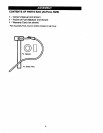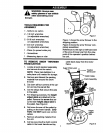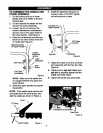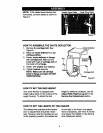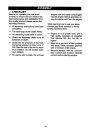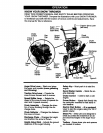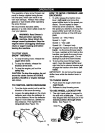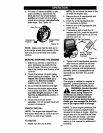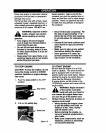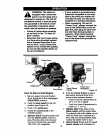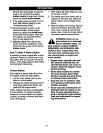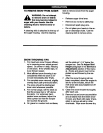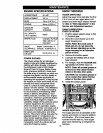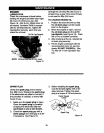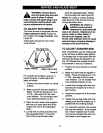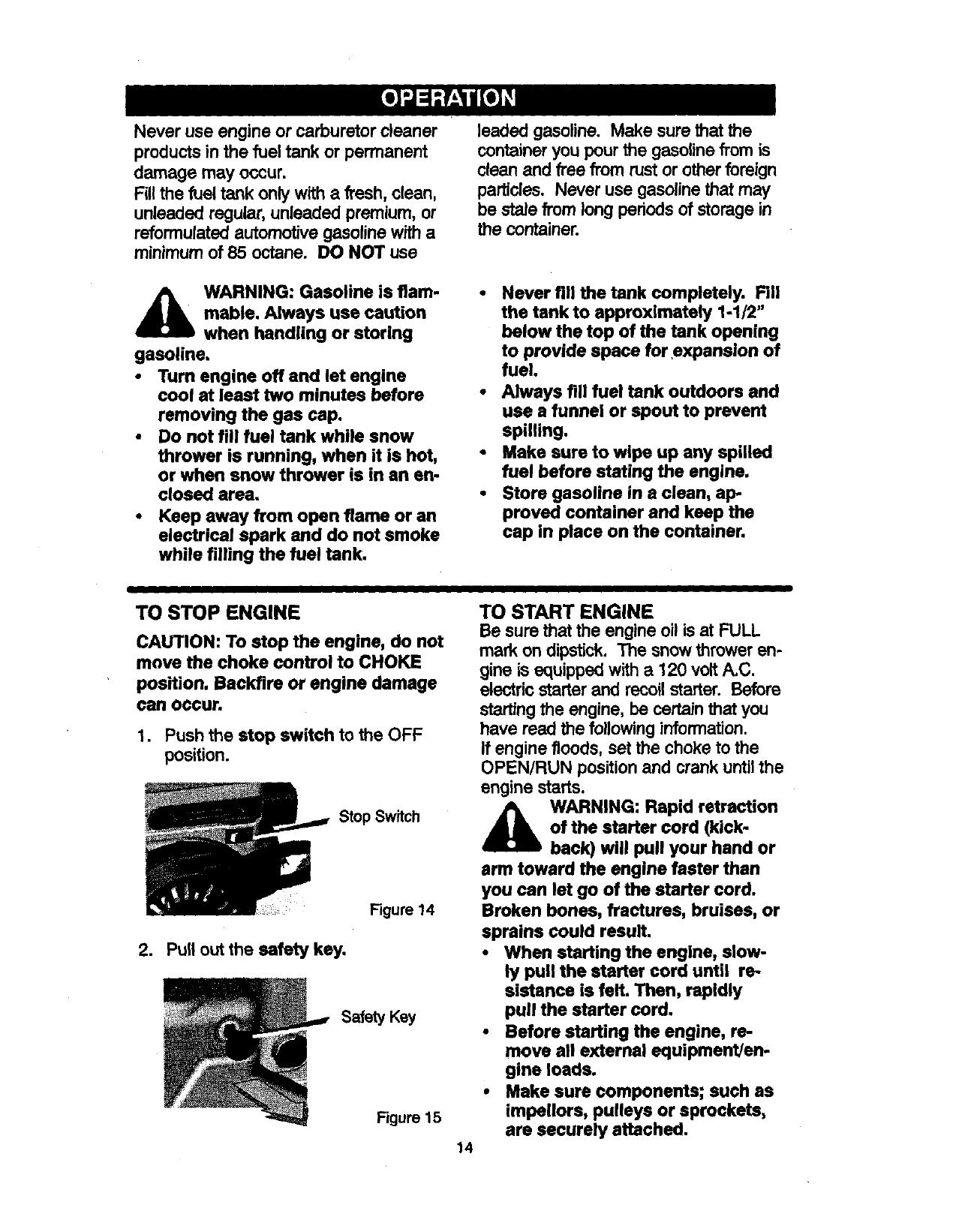
Never use engine or carburetorcleaner
productsinthe fuel tank or permanent
damage may occur.
Fillthe fueltank onlywitha fresh, clean,
unleaded regular,unleadedpremium,or
reformulatedautomotivegasolinewitha
minimumof 85 octane. DO NOT use
leaded gasoline. Make surethat the
containeryou pourthe gasolinefrom is
clean and free from rustor otherforeign
particles. Never use gasolinethat may
be stale from long periodsofstoragein
the container.
A ARNING: Gasoline is flam-
mable. Always use caution
when handling or storing
gasoline.
• Turn engine off and let engine
cool at least two minutes before
removing the gas cap.
• Do not fill fuel tank while snow
thrower is running, when it is hot,
or when snow thrower is in an en-
closed area.
• Keep away from open flame or an
electrical spark and do not smoke
while filling the fuel tank.
• Never fill the tank completely. Fill
the tank to approximately 1-1/2"
below the top of the tank opening
to provide space for expansion of
fuel.
• Always fill fuel tank outdoors and
use a funnel or spout to prevent
spilling.
• Make sure to wipe up any spilled
fuel before stating the engine,
• Store gasoline in a clean, ap-
proved container and keep the
cap in place on the container.
TO STOP ENGINE
CAUTION: To stop the engine, do not
move the choke control to CHOKE
position. Backfire or engine damage
can occuh
1. Push the stop switch to the OFF
position.
Stop Switch
Figure 14
2. Pull out the safety key.
Safety Key
Figure 15
TO START ENGINE
14
Be sure that the engine oil is at FULL
mark on dipstick, The snow thrower en-
gine is equipped with a 120 volt A,C.
electric starter and recoil starter. Before
starting the engine, be certain that you
have read the following information.
If engine floods, set the choke to the
OPEN/RUN position and crank until the
engine starts.
A ARNING: Rapid retraction
of the starter cord (kick-
back) will pull your hand or
arm toward the engine faster than
you can let go of the starter cord.
Broken bones, fractures, bruises, or
sprains could result.
• When starting the engine, slow-
ly pull the starter cord until re-
sistance is felt. Then, rapidly
pull the starter cord.
• Before starting the engine, re-
move all external equipment/en-
gine loads.
• Make sure components; such as
impellers, pulleys or sprockets,
are securely attached.



